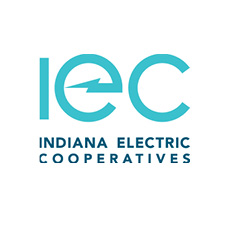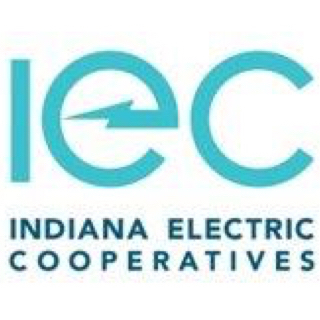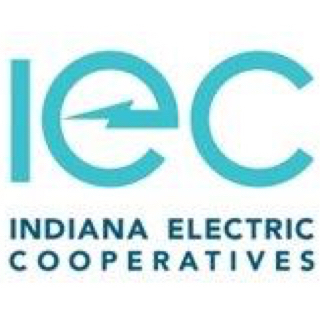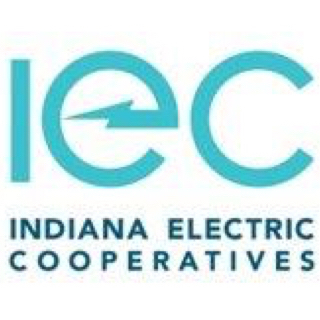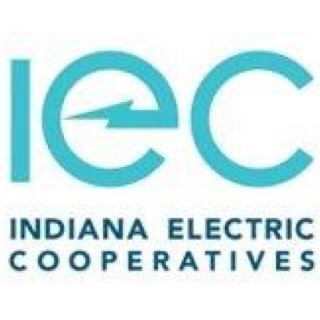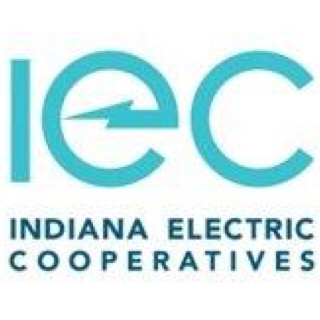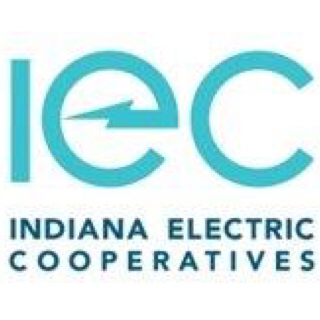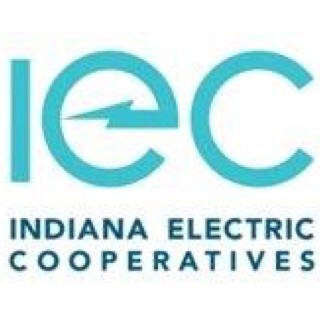Title Page
-
Conducted on
-
Prepared by
-
Location
-
Cooperative name:
-
Date of this inspection:
-
Name of the person making these entries:
GENERAL FACILTY
-
Good housekeeping is maintained. Inside and outside trash containers appear to be emptied on a frequent basis. Used and oil rags are contained in metal self-closing containers that are emptied daily.
-
Access to the non-public areas is limited. "No Trespassing" and/or "Authorized Persons Only" signs are posted where necessary.
-
Stairs, landings, and steps are free of any impediments, edges easy to discern, and allow safe movement in any direction. Handrails are properly secured. Steps and risers are uniform. Steps are well lit and marked as needed for visibility.
-
Are standard guardrails provided wherever aisle or walkway surfaces are elevated more than 30 inches above any adjacent floor or the ground?
-
Are standard stair rails or handrails on all stairways having four or more risers?
-
Where stairs or stairways exit directly into any area where vehicles may be operated, are adequate barriers and warnings provided to prevent employees stepping into the path of traffic?
-
Docks and safety rails are in good condition. Wheel chocks or other means are available for securing vehicles while loading or unloading. Dock plates or ramps are available to bridge the gap when using lift trucks.
-
Eyewash stations are located in areas with chemical hazards (corrosive) and are ready for emergency use. Plumbed eyewash stations "ready for emergency use" is required to be inspected weekly. For self-contained/portable eyewash equipment, the fluid is within recommended dates for safe use and inspected per the manufacturer's recommendations.
-
Ladders are in good condition with a valid date on the inspection sticker. Class, capacity ratings, and setup instructions are fully legible.
-
Cranes and overhead lifting devices are inspected by the operators before each use and annually documented by a certified inspector.
-
Hazard identification markings are in use as needed and meet the current requirements for background and letter coloring, size, shape, and appropriate levels of warning for the application involved (Danger, Warning, Caution). Low clearances, floor openings, uneven surfaces, docks, walkways, or hazardous work zones are clearly marked.
-
Fire sprinkler systems are fully operational and inspected annually. Sprinkler heads are located at minimum 18 inches from any obstruction, stored materials, or facility structure that would interfere with the discharge.
-
All fire extinguishers are inspected monthly/annually and have current inspection.
-
All facilities have a minimum of 60 B:C fire extinguishers within 75 feet of any location unless other requirements apply.
-
Battery charging areas are properly equipped and maintained (e.g. proper racks, signage, ventilation) A fire extinguisher is located within 50 feet of the station.
-
All facility doors and intended emergency pathways leading to the outside are unobstructed, capable of being used any time from the inside, and clearly labeled as an "Exit" or "To an Exit". Doors and emergency pathways leading to the outside that are not suitable exits shall be marked with "Not an Exit" signs. All "Exit" signs shall be fully operational and illuminated internally or externally.
-
First Aid, CPR/AED, and Bloodborne Pathogen Kits are readily available. Kits are very clean, well organized, and the equipment and supplies are inspected monthly.
-
Are unused portions of automotove service pits and pits not actually in use either covered or protected by guardrails or equivalent?
-
Are special precautions taken to protect employees during construction and repair operations?
-
Are all pulleys, belts, and fans that are within 7 feet of the floor or working level properly guarded? Are fan blades protected with a guard having openings no larger than 1/2 inch when operating within 7 feet of the floor?
-
Is a facility plug and cord lockout-tagout equipment mounted on a wall for easy access and availability?
-
All unused openings (including conduit knockouts) in electrical enclosures and fittings closed with appropriate covers, plugs, or plates?
MOBILE EQUIPMENT FORKLIFTS, SCISSOR LIFTS, ETC
-
Equipped with the necessary safety equipment (seat belts, safety decals, guards, shields).
-
Equipped with a fire extinguisher.
-
Mobile equipment is inspected daily before being placed in service.
-
Trailers and towed equipment are properly chocked.
FLAMMABLE MATERIALS
-
When not in use, flammables/combustibles are stored in approved flammable cabinets.
-
Flammable cabinets are labeled or marked with the wording "Flammable" or "Flammable-Keep Away from Open Flames." Flammable cabinets are closed and latched after each use. Not more than 60 gallons of Category 1,2 and/or 3 flammable liquids or 120 gallons of Category 4 flammable liquids shall be store in any one storage cabinet. Containers with a maximum 5-gallon capacity are stored inside flammable cabinets. Flammable cabinets are either vented to the outside or the vent is capped. Flammable cabinets are located away from facility energized electrical equipment where feasible. Contents are stored in an orderly manner.
-
Portable flammable containers are designed and labeled for the product being stored and meet current use and storage requirements. Properly rated (FM or UL) safety cans are used for flammables. Pressure relief is available and operational. Spark suppression is designed into these containers. Containers are marked or colored for the liquid being contained. Containers are stored where the product will not create additional hazards.
CUTTING & WELDING
-
Gas Cylinder Storage: (1) No more than a single acetylene cylinder and a single oxygen cylinder are on a cylinder cart. The cylinder cart must be specifically designed to hold/carry oxygen and acetylene cylinders in the upright position. The cylinders must be securely held to the cart (such as by straps, chains or other securing device). Cylinders not stored on a cart are firmly attached (such as by chains or other secure means) in an upright position to a substantial vertical surface (such as a wall, steel column, exposed wall studs).<br>(2) The cart is on a firm, level surface.<br>(3) The cart is not in an area where there is a reasonably foreseeable risk of being struck by vehicles, equipment, or materials (such as in a pathway for vehicles on a construction site).<br>(4) Both cylinders either have valves closed with protection caps on or are connected to a properly functioning regulator.
-
Welding areas are properly equipped and maintained. Welding areas are clearly marked "Welding Area." Welding area is designed with protective shield or curtain to protect workers and other people in the vicinity of this welding activity. Signs are posted indicating "Eye Protection Required."
-
Welding safety equipment, helmets face shields, goggles, sleeves, and aprons are available in good condition and equipped.
-
Welding equipment, cables, connections, clamps and electrode holders are in good condition.
-
Fire extinguishers are present within 25 feet of welding work areas.
TOOLS, EQUIPMENT, ELECTRICAL MAINT. FACILITY
-
Hand and power tools free of defects / hazards, and if so are marked "out of service"
-
Electrical power tools and equipment have 3-wire grounding or are double-insulated and maintained in very good condition.
-
All tools are stored in special containers or designated locations.
-
At each power tool station, there are clean goggles and face shields are available with signs posted requiring the use of these items.
-
Air compressor is maintained in proper working condition? Accumulated oil and water is drained according to manufacturer's recommendation? Compressed air pressure for cleaning when measured at the nozzle when dead-ended does not exceed 30 psi? Do employees wear chip guarding and PPE provided when compressed air is used for cleaning purposes? Are safety chains or other suitable devices used at couplings of high-pressure hose lines where a connection failure would create a hazard?
-
Drop electrical cords used properly and in good condition
-
Electrical enclosures such as switches, receptacles, and junction boxes have tight-fitting covers or plates
-
Tire changing tools and tire safety equipment is in good condition. Safe practice procedure is posted and enforced? Are employees strictly forbidden from taking a position directly over or in front of a tire while it's being inflated?
-
Are grinders, saws, air compressors, and portable power tool equipment provided with appropriate safety guards?
-
Do abrasive wheel grinders have their work-rest kept adjusted to within 1/8 inch of the wheel? The adjustable tongue on the top side of the grinder is adjusted within 1/4 inch of the wheel? Do the side guards cover the spindle, nut, and flange and 75 percent of the wheel diameter? Are bench and pedestal grinders permanently mounted? Are goggles or face shields worn when grinding? Is cleanliness maintained around grinders?
-
Are employees who operate powder-actuated tools trained in their use?
RIGGING, HOISTING & LIFTING EQUIPMENT
-
Rigging including chain falls, comealongs, shackles, hooks and slings are in good condition
-
Rigging equipment not in use is properly stored
-
Slings contain legible tags showing capacity
-
Floor hoists, jacks and jack stands are marked with capacity ratings and are in good condition
-
Hooks have safety latches or moused
WAREHOUSE & MATERIAL STORAGE
-
Materials stored in a safe and orderly manner.
-
Shelves, bins, and racks are rated and visibly marked with the maximum capacity of material weight. Shelves, bins, and racks are designed to hold materials in place to lessen the chances of falling. Shelves, bins, and racks are designed or anchored to avoid tipping.
-
Materials are stored so no sharp ends or protruding objects are extending from storage positions to catch clothing or injure a person passing in aisles.
-
Where materials are stored overhead, storage is adequate, orderly, and meets all related requirements including weight ratings and capacities.
-
Low clearances are marked with signs.
-
Pole yards and outside storage have gates and fences designed, maintained, and used to secure these areas
-
Gates and entrances to these areas are located where vehicles and equipment can safely clear the traveled portion of public roads during gate operation, locking, or unlocking.
-
Poles are stored to preserve their condition, organized for safe selection and loading, and secured by pole stops or bunk design.
-
Poles yards and outside storage are designed for large equipment maneuverability in all weather with wide driving lanes, solid surfaces, and adequate drainage.
-
Pole yard and outside storage materials are properly stored off the bare ground, with related materials stored together and identified by unit markings or marked storage areas.
-
Pole yards and outside storage are equipped with lights that can be used during hours of darkness for worker safety.
-
Previously used capacitors are properly shunted.
-
Mezzanine is clutter-free, well organized, and well lit. The mezzanine weight capacity is posted and adhered to. Are all elevated surfaces provided with standard 4-inch toeboards? Safety gates are self-closing/spring-loaded. Signs are posted indicating that fall protection must be worn prior to opening the loading safety gate. Is there an anchor point available? Note: The only exception to this mezzanine fall protection rule is if an appropriate mezzanine pallet gate is installed that allows the pallet to move with the spring-loaded gate, thus greatly decreasing the risk of fall hazards to employee(s). Employees working on the mezzanine have been properly trained?
-
Are safety data sheets (SDS's) available and easily accessable to employees?
POWER PANELS/DISCONNECT SWITCHES ON WALLS, EQUIPMENT & UTILITY POLES
-
Panels/safety switches have 36" clearance
-
Panels are secured and doors are closed tight; all clamps work
-
Panel/switches have required markings (nameplate, voltage sticker, panel board circuits)
-
No knockouts open, wires exposed, other holes in panel, etc.
ENVIRONMENTAL/HAZARDOUS MATERIALS
-
Fueling areas are equipped and maintained with the proper safety equipment and meet current requirements for storage and monitoring of these fuels onsite. Each service or fueling area has at least one fire extinguisher with a minimum 20 B:C capacity rating and is located between 25 feet and 75 feet of the outdoor pump dispensers. Conspicuous and legible signs, "No Smoking," "No Open Flames," and "Shut Off (gasoline) Motors During Fueling" are posted. The dispensing nozzles are equipped with approved automatic closing devices and hoses are equipped with breakaway connectors. Clearly identified and easily accessible emergency shut-offs are provided within 75 feet of the dispensing devices. Islands and barriers are provided to protect the pumps. Hoses are stored out of traffic areas.
-
Underground storage and tanks meet appropriate rules and regulations.
-
Above-ground storage tanks meet regulations including monthly documented inspections.
-
Oil-filled units are non-leaking and monitored for spills. Secondary containment is well maintained, shielded from the weather, and sufficient. Proper markings and PCB markings are present.
-
No evidence of petroleum spills on the ground surface.
-
Universal Waste containers are stored closed, structurally sound, compatible with waste, lack evidence of leakage, spillage, or damage that could cause leakage, properly labeled or marked clearly with the appropriate "universal waste" listings. Each container must be marked or labeled with the earliest date that any universal waste in the container became a waste (not to exceed one year from the earliest date); OR, each individual item of universal waste (e.g., each battery, lamp, or thermostat) must be marked or labeled with the date it became a waste or was received; OR, maintain an inventory system on-site that identifies the date of each universal waste became a waste or was received.
-
Parts cleaning and other solvents (flammable or biodegradable) are stored and used properly in maintenance/repair facilities. Approved containers for dispensing solvents is available. The parts washer is well maintained and UL listed. Parts washer has "Flammable" and "No Smoking" signs posted. Proper ventilation is available for solvent use and proper solvent disposal practices are in place. A fire extinguisher is located within 50 feet of the parts washer.
Completion
-
Any other observation or recommendations.
